Part two of this feature covering the RSSB-sponsored 2022 Vehicle-Track System Interface Committee and ADHERE seminar, looks at the challenging subject of adhesion, something that has worried railway engineers since the very earliest days of powered rail transport.
Rail Engineer has reported extensively about the Adhesion Research Group’s (ARG) work aiming to improve the safety and performance of the railway in low adhesion conditions. The seriousness of this work was brought into sharp focus in autumn 2021 when two trains collided at Salisbury on 31 October 2021 after one train failed to stop short of a signal at danger because of extremely low adhesion.
The hybrid meeting in York had updates on driver behaviour, managing train sanders, using train and other data to forecast adhesion issues, and some fundamental research on sand-like substances that might better activate low voltage track circuits.

Heart of the system
Steve Roberts from S and L Roberts (Railway Consulting) Ltd had, with Richard Roels (RJ Roels Ltd) and Gary Stewart, studied the development of policies for consistent approaches to low-adhesion traction and braking (RSSB Research Project T1221). The objective was to provide the UK rail industry with guidance on low adhesion driving policies, to enable consistent and effective traction, and braking under low adhesion conditions, facilitating improved, safe performance. The project also evaluated the intended and actual use of existing in-cab low adhesion warning lights, to propose the ideal driver and vehicle response, to help inform driving policies.
The driver makes key decisions which depend on the technology and information at his or her disposal. Has the railhead been treated, has a warning been given, what type of brakes are fitted, and are there effective sanders fitted? Moreover, the characteristics of the particular class of train need to be taken into account and these sometimes change over time. Putting this another way, quoting from part of the final report:
“It is important to note that there are limits to what train drivers can achieve when low adhesion is an issue. Drivers attempt to overcome challenges posed by the infrastructure and environment, whilst providing a safe and reliable service to passengers – getting this right often involves split-second and instinctive decisions. Far from drivers being a cause of adhesion incidents and operational delay, drivers enable safe and effective operations under difficult environmental conditions and when other control measures cannot overcome the problem.
“Improvements to railhead condition, whether that be achieved by enhanced sanding, cleaning or other approaches that enable better acceleration and braking, will help realisation of all goals (safety, performance, comfort, and damage). Such improvements will also make it easier for the driver as there will be less demand on them to ‘weigh-up’ low adhesion risk.”
Driver confidence
Much to his surprise, Steve said, given the number of train/freight/on-track machine (OTM) operating companies in the UK, they examined 91 company driving policies and associated documents. They also carried out 39 interviews with drivers, driver instructors and senior managers, examined the braking and adhesion systems fitted to GB rolling stock; and hosted two workshops to address challenges which were attended by 16 railway undertakings.
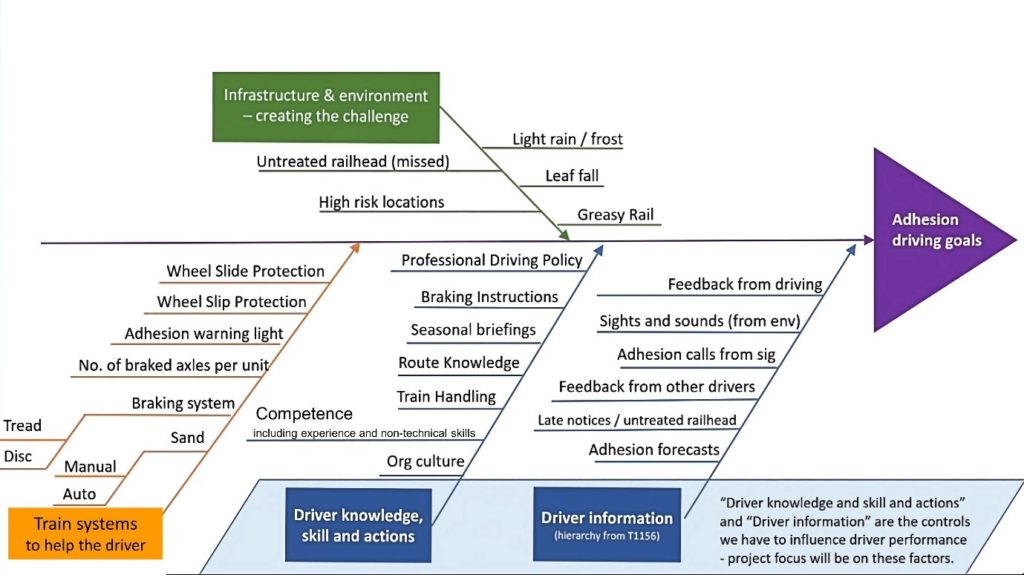
Steve mentioned some things that were learned during the study including:
- Chiltern and Great Western Railway have designed their sanding systems so that they work in brake step 1 as the wheelslide protection systems are not considered to be working properly without sanding.
- Many operators require extra brake tests in the autumn, but the nature of the tests varied from ‘drop speed by 10mph’ to ‘slow down almost to a stop’.
- For cascaded stock, low adhesion tends not to figure much in the management of change documentation.
- Remarks in policy documents terms such as ‘brake earlier/brake lighter’ were undefined and not always reflective of rolling stock capabilities. “How much earlier, how much lighter?”, Steve wondered.
He highlighted the plight of on-track machine (OTM) operators as they often drive vehicles with few, if any adhesion aids and limited knowledge of where poor adhesion might be an issue. It was not surprising, therefore, that the driving policy report for OTMs was the biggest.
The project has delivered policy guidance documents for freight, passenger, OTM operations and for the in cab low adhesion warning light, together with several case studies and an overall report. All this material is available from the RSSB Research Catalogue websites.
Steve concluded with an observation from one of the case studies concerning RSSB’s recent report showing that a disproportionate number of SPADs took place on empty coaching stock at low speed in the autumn. Musing aloud he wondered why sanding is cut out below 10 mph when emergency braking is applied?
Sanding good practice
Sanding has featured frequently in Rail Engineer over the last five years, most recently in issue 190 (Jul-Auge 2021) discussing the performance of Double Variable Rate Sanders (DVRS) on two class 323 units and the business case for fitting to the entire fleet (now approved). Liam Purcell from Ricardo and Andrew Lightoller from DB ESG recapitulated the benefits before moving on to describe the Sander Maintenance Good Practice Guide aimed at preventing empty sand hoppers, incorrect sand flow rate from the system, and/or the nozzles not pointing at the wheel-rail ‘nip’.

The good practice guide covers all aspects including:
- sand quality (is it the right grade and dry?)
- storage (keeping sand dry is critical), hopper filling (many ways to get this wrong; access; obstructions, keeping the sand dry, etc, so this could benefit from a human factors review)
- daily check (your writer has observed the neat piles of sand around the stabling positions of Croydon trams at Therapia Lane depot)
- periodic check (measured and recorded sand flow, nozzle direction)
- pre-autumn checks (since sanders are typically little-used for the rest of the year). Pre autumn checks should include cleaning, checks on hopper seals and breather as well as checking for dry oil free compressed air (once again to make sure the sand stays dry).
Liam and Andrew concluded that the guide is available on the RSSB Research Catalogue websites.
Properties of Sand
Keeping with the topic of sand, signal engineers have long been concerned that sand will affect track circuits’ ability to detect trains. Neil Ovenden, chair of the ARG said that the only confirmed instances of this had been with the one-shot sanders used for a while when braking sanders were in their infancy, but the risk remains and the Universities of Sheffield and Newcastle were commissioned to investigate.
Sheffield’s Professor Roger Lewis and Dr Will Skipper described their work to characterise how the composition of enhanced adhesion materials affects track circuit performance. Note the term ‘enhanced adhesion materials’ rather than sand. Questions about whether this was sand mixed with some conductive material were not answered in the interests of commercial confidentiality.
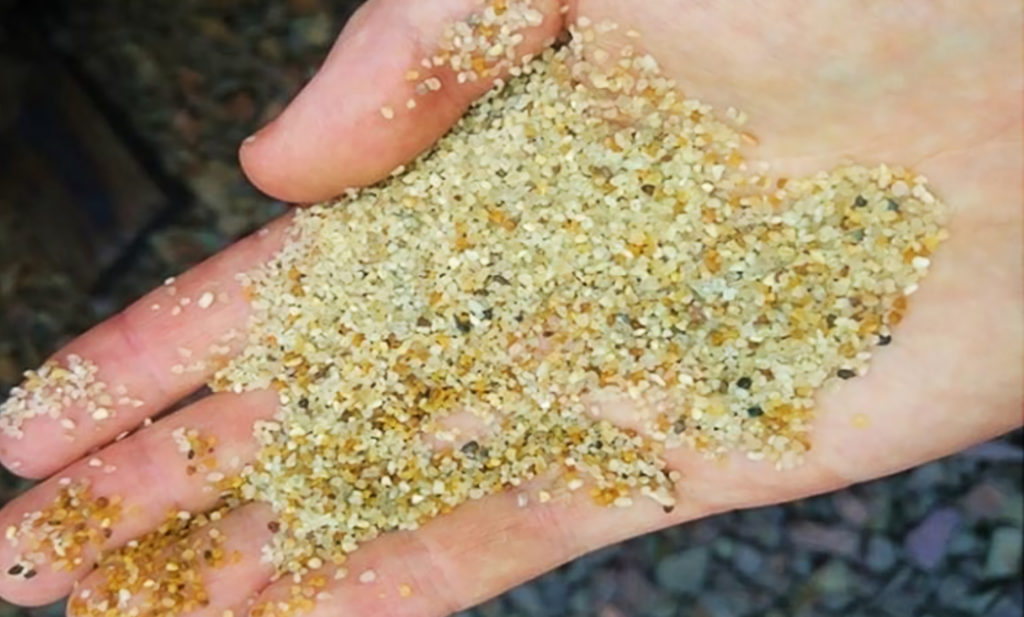

Seven different particle types, including standard sand used in today’s sanders (GB sand) were characterised in the laboratory for mechanical properties: size distribution, shape distribution, density, flowability, direct shear test and breakage index. The laboratory tests also covered testing for adhesion and conductivity on a simulated 0.5V dc track circuit in the presence of clean wet and dry conditions, and with wet and dry leaf film.
All seven products produced acceptable adhesion performance – typically three to four times better than the unsanded performance with leaves. For electrical resistance, some of the newly developed products produced lower resistance values than GB sand, with none producing a higher resistance. Some of the new products showed a lower flow rate than GB sand (possibly undesirable) and some showed a narrower spread from the nozzle (possibly desirable).
Tests were also carried out on a real railway with a class 20 locomotive on a 0.5V dc track circuit. A number of different application rates were simulated by hand applying sand on the rail head over 20 metres of track and two passes were made over the material. GB sand and two of the new materials were tested, with a third subjected to some of the tests. The results showed that two of the new materials were consistently delivering much better train detection compared with GB sand.
The project demonstrated that the new products reduced the likelihood of isolation occurring in both laboratory and field testing compared to GB sand, and in the lab tests, none of the products created low adhesion conditions and they all had a mitigating effect against leaf contamination.
These results open the possibility for a number of additional benefits of sander use:
Quantity of dispensed adhesion enhancing material might be increased to improve performance in contaminated areas without risk of poor track circuit performance.
On routes with low voltage DC track circuits that are compromised by leaf fall.contamination, regular use of ‘enhanced sand’ could tactically help reduce track circuit failures until the track circuit replacement work happens.
The use of ‘enhanced sand’ for leading sanders at the front of a train might obviate the need for a low-speed sander cut off which could help with the final braking action that in turn could reduce low adhesion related platform overruns.
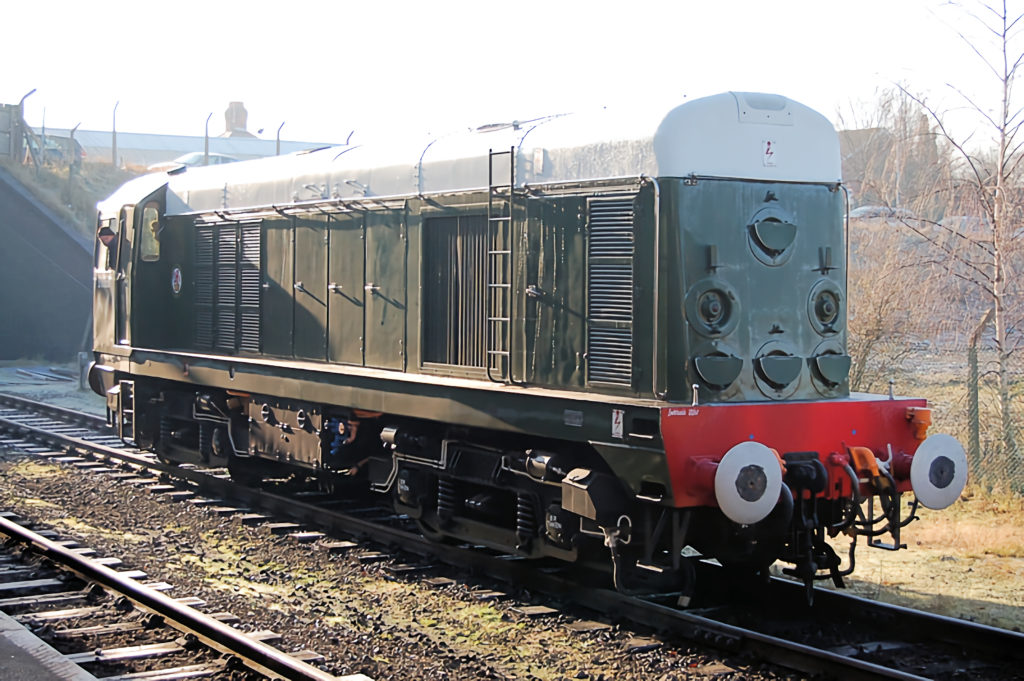
Will said that the next steps will include further field testing to ensure acceptable adhesion levels, testing in real world operations to ensure compatibility with sanders, further study of conductive performance characteristics and, of course, investigation of economic benefits.
Data to insights
Targeted adhesion management using on-train data was the final presentation of the day, from Stephanie Klecha, head of digital services at Porterbrook Leasing. Her role within Porterbrook was to maximise the value of data recorded on trains, to enable all reliability, engineering, and maintenance planning to be underpinned by data analytics and to unlock the value of the 90%+ unused data across the industry.
For adhesion management/forecasting, Porterbrook has, since 2019, been working with Network Rail (NR) and Govia Thameslink Railway (GTR) on a project that uses GPS and on train data recorder (OTDR) data to map and trend adhesion issues (i.e., WSP/sander activity). This is linked to tracking the daily rail head treatment trains to assess whether the water jetting/sandite application is making a difference.
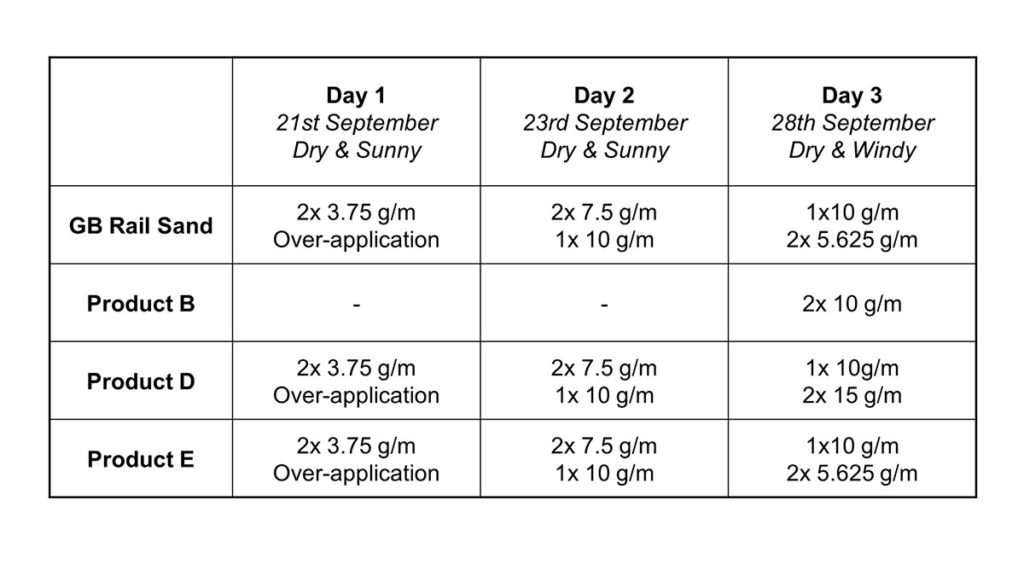
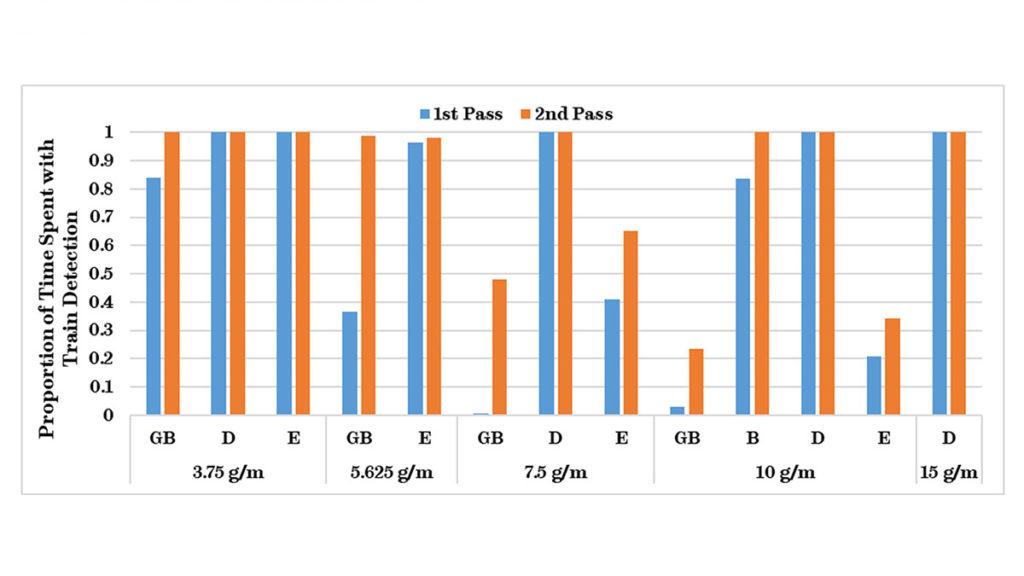
Porterbrook is also supporting the supply chain to develop a visualisation that adhesion controllers might buy into. Initially, the system was using an OTDR feed which frequently downloaded data, but since mid-2021 this is now a live feed to accompany a GPS feed, giving 10-metre accuracy on the correct running line. A significant part of the project was to develop the commercial aspects of reliably delivering and integrating data from a variety of different sources, including the GTR operated trains from Porterbrook and other leaseholders, the Meteorological Office, and NR.
The plan for 2022 and onwards includes expansion beyond GTR; encouraging OEMs, TOCs, supply chain, and ROSCOs to share their equivalent data; trialling NR’s ‘data marketplace’ as the end point for the data and the subsequent source for visualisations; collaborating with RSSB and RDG on data specifications and sharing data across the industry.
The plan also includes collaboration with other projects and suppliers to access additional datasets including: alternative rail head treatment technologies (e.g. PlasmaTrack); alternative adhesion measurement systems (e.g. tribometer rail head friction measurement); DVRS roll out including tracking where sand is applied; exploring links with weather forecasters on adhesion forecasting models; and exploring links with vegetation mapping from FFCCTV datasets. An ambitious plan indeed.
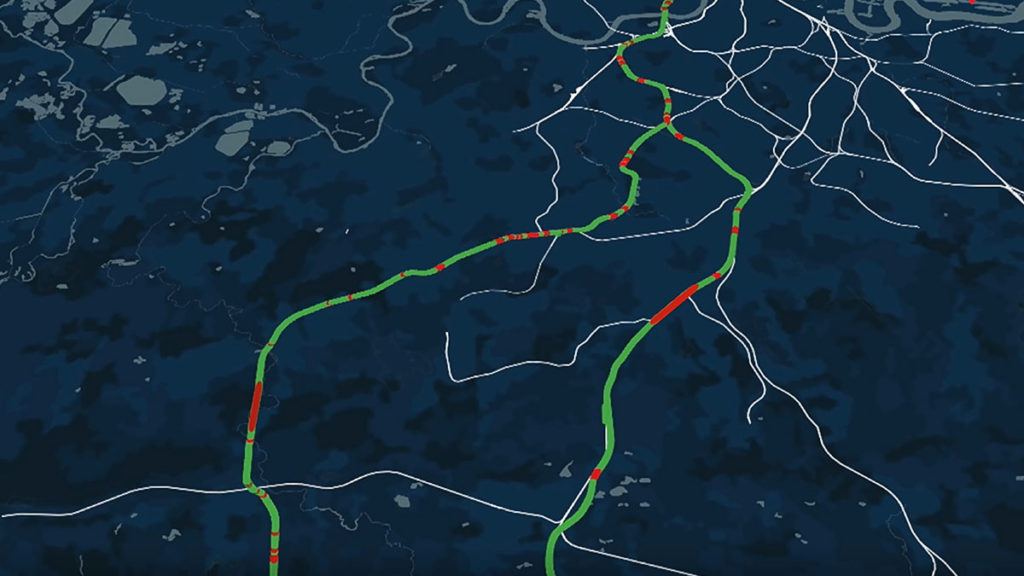
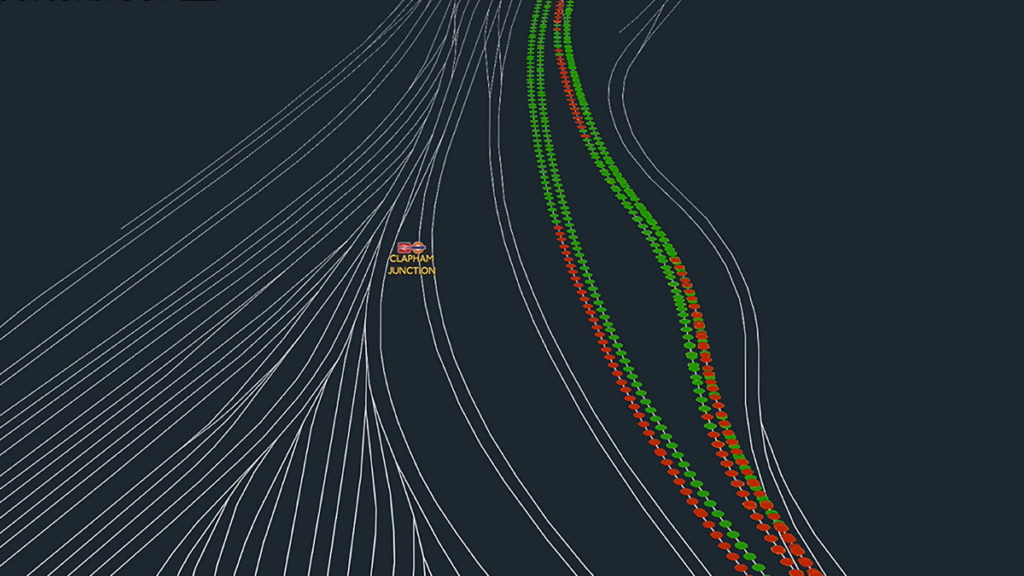
Map of braking zones: green indicated braking without WSP and red with WSP. Wide area view and magnification showing Clapham Junction, Brighton fast and slow lines with up and down lines shown separately.
Conclusion
It is good to see steady progress towards the roll out of DVRS combined with appropriate guidance for drivers to make best use of it. Work on what might loosely be described as ‘conducting sand’ opens the way for an even higher volume to be used if conditions make it necessary. Network controllers and infrastructure managers are not forgotten, with the work to make available information about adhesion risk areas which might lead to more intelligent scheduling of railhead treatment trains.
Thanks to the presenters for their assistance in producing this article and to Ben Altman from RSSB.


Train Driver Licensing was amended in 2013 to include some basic physics understanding. This mandated requirement has never been actioned. Many drivers fail to even understand the basic units of deceleration. The colour coding and number system pertaining to adhesion, should be changed regarding the numbers.
Black = 1 to 3 % g, Red = 4 to 5 % g, Yellow = 6 to 8 % g, Green = 9 to 12 % g.
Deceleration is not a reduction in speed alone is it? The time taken is ignored during running brake tests, the arcane black art rules. Just look at Edinburgh, 30 seconds plus to slow by 11 mph, with a 50 percent brake application. The dynamic brake masks nothing, simple maths.